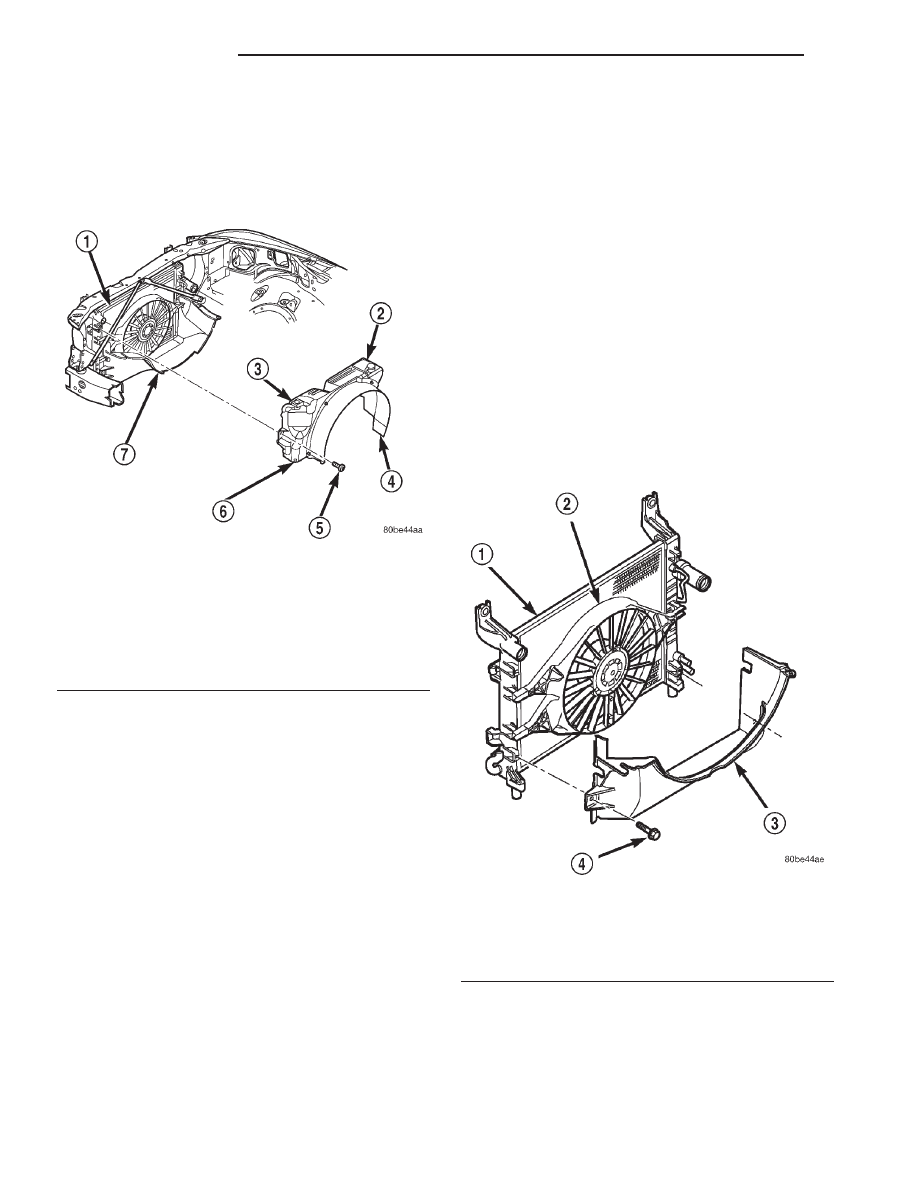Dodge Dakota (R1). Manual - part 274

STANDARD PROCEDURE - ROUTINE LEVEL
CHECK
NOTE: Do not remove radiator cap for routine cool-
ant level inspections. The coolant level can be
checked at coolant recovery bottle (Fig. 9).
The coolant reserve/overflow system provides a
quick method for determining coolant level without
removing radiator pressure cap. With engine not run-
ning, open the coolant recovery bottle cap and
remove coolant level indicator dipstick to observe
coolant level in coolant recovery bottle. The coolant
level should be between ADD and FULL marks. If
the coolant level is at or below the ADD mark, fill
the recovery bottle with a 50/50 mixture of antifreeze
and water ONE QUART AT A TIME. Repeat this pro-
cedure until the coolant level is at the FULL mark.
COOLANT SELECTION AND
ADDITIVES
DESCRIPTION
The presence of aluminum components in the cool-
ing system requires strict corrosion protection. Main-
tain coolant at specified level with a mixture of
ethylene-glycol
based
antifreeze
and
water.
DaimlerChrysler
Corporation
recommends
Mopar
Antifreeze or equivalent. If coolant becomes contami-
nated or looses color, drain and flush cooling system
and fill with correctly mixed solution.
CAUTION: Do not use coolant additives that are
claimed to improve engine cooling.
ELECTRIC COOLING FAN
DIAGNOSIS AND TESTING - ELECTRIC
COOLING FAN
The powertrain control module (PCM) will set a
diagnostic trouble code (DTC) in memory if it detects
a problem in the electric cooling fan relay or circuit
(Refer to 25 - EMISSIONS CONTROL - DESCRIP-
TION).
The DTC can also be accessed through the DRB
scan tool. Refer to the appropriate Powertrain Diag-
nostic Procedures manual for diagnostic information
and operation of the DRB scan tool (Fig. 10).
RADIATOR FAN MOTOR INOPERATIVE
Equipment Required:
• DRB Scan Tool
• Volt/Ohm meter
• Wiring Diagrams section of this manual
Fig. 9 Coolant Recovery Bottle Location
1 - RADIATOR
2 - WASHER FLUID RESERVOIR
3 - COOLANT OVERFLOW/RESERVOIR
4 - FAN SHROUD (UPPER)
5 - SCREW
6 - INTERLOCKING PINS
7 - FAN SHROUD (LOWER)
Fig. 10 Electrical Cooling Fan
1 - RADIATOR
2 - ELECTRIC FAN ASSEMBLY
3 - FAN SHROUD (LOWER)
4 - SCREW
7a - 42
5.2L ENGINE
R1
COOLANT (Continued)